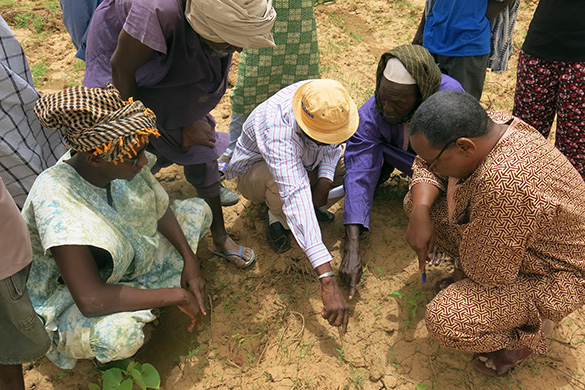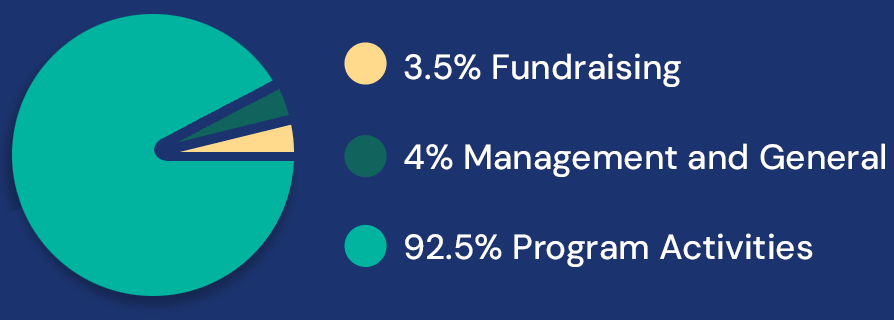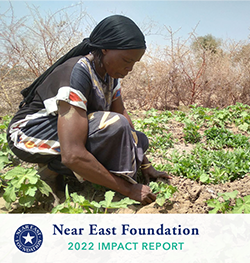Visiting the projects supported by the Near East Foundation (NEF) in Mali is hardly ever a short job. The journey alone to reach a village often takes hours of driving through a beautiful but seemingly endless landscape of nothing. NEF in Mali does not operate “au bord de goudron” (alongside the road). Without even a clearly identifiable road in front of you, it makes you wonder how they actually ever found the village, let alone started a project there. A trip to a ‘new’ village for NEF sheds some light on these questions.
Word of mouth is a powerful form of communication here. One village benefits from the help of NEF, then another village hears about it and gets in touch. In the majority of the cases it is not NEF that seeks the villages or the projects, but the villagers that seek NEF. The local population often know very well what their needs are but do not have the means to do something about it.
This is also true for Timè, the village we are visiting today. The villagers heard about the work done by NEF in another village and contacted them to learn about the possibilities for their water problems in their rice fields.
So here we are, in Timè. After they came to talk to NEF, NEF decided to visit and actually have a look at their problems to see what might be possible. Passionately the men explain their situation. Water does not reach all the fields and they would like to increase their cultivation.
“There is a small river here, and a small river there, and all the space in between there is dry,” the village chief explains while waving his arms and pointing in all directions. I have no idea what he actually means, the whole area seems the same to me. True, there is a language barrier between us, me being white, European and unable to speak their local language, while they are Malian, only speaking Fulfuldé or Bambara. But still, even their directions simply make no sense to me at all. When we go to see the “other river” it only seems to be more complex and I can understand even less. It seems that I am alone in this problem. My NEF colleagues know exactly what the villagers are talking about. One of the NEF coordinators takes a stick and starts to draw in the dried clay:
“So the road goes like this, there is a field here, water comes from here…” I am amazed. How did he just do that? He just drew a small map of the whole area, where I did not even see how the road went.
I still have a lot to learn. That’s for sure.
This visit does not yet mean the NEF will automatically finance a project here. There are many different ways for a project to actually start. In the case of Timè, it is now their turn again. They will have identify a solution for their problem themselves now and come with concrete proposal on how to realize this. From time to time NEF launches a call for proposals, the villagers can respond on this call with their proposal. All villages in an identified region can send project proposals related to resilience to climate change and food security. The NEF team will consider all proposals and support the best projects among them. This encourages the beneficiaries to think about their most urgent needs and possible solutions and at the same time guarantees a certain level of ownership over their project.
So this is how an idea comes into being. This is how NEF is able to support even the most remote villages, and this is how the villages find NEF when in need for support. For Timè there still is a lot of work to do, but their willingness to work and develop themselves further already speaks for them.
by Alinta Geling



